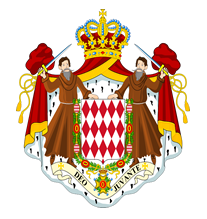Monaco: Government
Key Figures
- Chief of State:
- Prince Albert II
- Head of Government:
- Minister of State Didier Guillaume
Overview
- Government Name:
- Principality of Monaco
- Constitution:
- Adopted: 1911; Enacted shortly after the Monegasque Revolution, this constitution outlines the three branches of government, including several administrative offices and councils, which share advisory and legislative power with the Prince. It also defines the line of succession to the Monegasque throne.
- Government Type:
- Constitutional Monarchy

Index of Economic Freedom
Country Risk Rating
Government Branches
| Main Powers | Election Process | Election Cycle 1 | |
|---|---|---|---|
| Executive | Prince represents the principality in all foreign relations, initiates the laws, and has full authority in the courts and tribunals. Minister of State leads the government's action and is in charge of foreign relations. Also directs the executive services, commands the police, and presides over the Council of Government. |
Prince is hereditary and Minister of State is appointed by the monarch. |
Life appointment |
| Judicial | Serve as the judicial revision courts which hear civil and criminal cases. |
Members are appointed by a Sovereign Ordinance. |
Life appointment |
| Legislative | Meet at least twice a year to vote on the country's budget and bills proposed by the prince's government. |
16 members are elected by majority vote in mult-member constituencies and 8 members are elected through an open-list proportional representation system. |
5 years |
Regional Trade Blocs
No Regional Trade BlocsInternational Organization Participation [2]
Environmental Agreements [3]
Tax Information [2]
- Tax Authority:
- Information not available
- Tax Name:
- Information not available
Sources:
- ElectionGuide http://www.electionguide.org/
- EY, http://www.ey.com
- CIA World Factbook, https://www.cia.gov/the-world-factbook/
- U.S. Bilateral Relations Fact Sheets http://www.state.gov/r/pa/ei/bgn/


